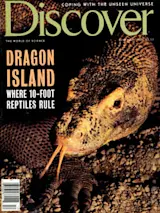A plethora of planets and moons may populate the universe, but only one reflects Earth’s light back to our eyes. This unique talent belongs, not surprisingly, to our nearest neighbor--the moon.
Perhaps you’ve already noticed an odd aspect of the crescent moon: the dark portion glows a bit, even though there’s no sunlight there. It’s Earthshine: sunlight bouncing off our shiny world to the moon’s nightside and then back to us. Any citizen of the crescent moon’s dark side would be dazzled by the gibbous Earth.
But there’s another, rarer occasion when our planet stands mirrored by the moon. It’s coming up this month, when the moon plunges into Earth’s shadow.
It’s the first total lunar eclipse in almost three years, and the first since the Mount Pinatubo eruption in the Philippines. For over a year, a pink afterglow has followed sunset--a reflection from the volcano’s stratospheric dust and a ...














